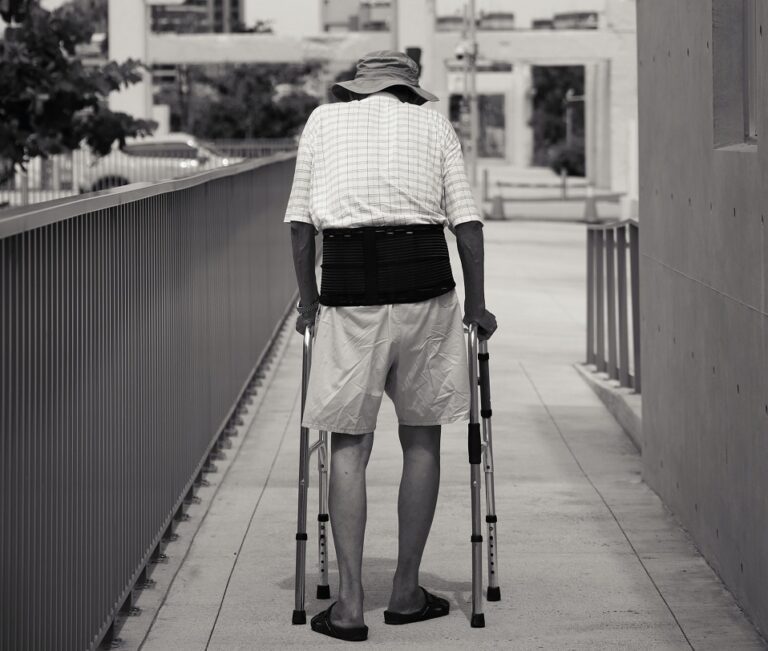Page Contents
Parkinson’s disease is a progressive neurological disorder that affects movement, balance, and coordination. It occurs due to the gradual degeneration of dopamine-producing neurons in the brain, leading to symptoms such as tremors, stiffness, slowness of movement, and impaired posture. While the disease primarily affects older adults, symptoms can develop as early as 40 years old, making it crucial for middle-aged and older individuals to recognise early warning signs. The symptoms tend to worsen over time, impacting the ability to perform daily activities and reducing overall quality of life.
Prevalence of Parkinson’s Disease
Parkinson’s disease is one of the most common neurodegenerative disorders worldwide, affecting more than 10 million people. Its prevalence increases with age, and studies suggest that around 1-2% of individuals over 60 years old will develop the condition. In Singapore, approximately 8,000 people have been diagnosed with Parkinson’s disease, and the number is expected to rise as the population continues to age. With an ageing demographic and increased life expectancy, the burden of Parkinson’s disease on individuals, families, and healthcare systems is expected to grow significantly, making early diagnosis and awareness even more important.
Is Parkinson’s Disease the same as dementia?
Although Parkinson’s disease and dementia are both neurodegenerative conditions, they are not the same. Parkinson’s disease primarily affects movement and motor functions, while dementia is characterised by cognitive decline, memory loss, and impaired reasoning. However, in the later stages of Parkinson’s disease, some individuals develop Parkinson’s disease dementia (PDD), which includes symptoms such as forgetfulness, confusion, and difficulty concentrating. Additionally, there is another related condition called Lewy body dementia, which shares overlapping symptoms with both Parkinson’s disease and Alzheimer’s disease. While not all individuals with Parkinson’s disease develop dementia, cognitive decline can become a concern in more advanced cases.
Types of Parkinson’s Disease
Idiopathic Parkinson’s Disease
The most common form, with no known cause.Genetic Parkinson’s Disease
Linked to inherited genetic mutations and tends to run in families.Parkinsonism
A group of conditions that mimic Parkinson’s disease symptoms but result from strokes, brain injuries, or certain medications.Parkinson-Plus Syndromes
More aggressive forms of the disease, including:Multiple System Atrophy (MSA)
Progressive Supranuclear Palsy (PSP)
Corticobasal Syndrome (CBS)
Risk factors for Parkinson’s Disease
Age
Most cases occur in individuals over 60, though early-onset Parkinson’s disease can develop before 50.Genetics
Some cases are linked to inherited mutations, though familial Parkinson’s disease is rare.Environmental exposures
Prolonged contact with pesticides, herbicides, and heavy metals may contribute to Parkinson’s disease.Head trauma
Repeated head injuries, such as in contact sports, may increase risk.Gender
Men are slightly more likely than women to develop Parkinson’s disease, though the reasons are unclear.
What causes Parkinson’s Disease?
The primary cause of Parkinson’s disease is the loss of dopamine-producing neurons in the substantia nigra, a part of the brain responsible for coordinating movement. Dopamine is a crucial neurotransmitter that helps regulate motor function, and its depletion leads to the hallmark symptoms of Parkinson’s disease. Scientists believe that a combination of genetic factors, environmental exposures, and the natural ageing process contribute to neuronal loss.
Some studies suggest that oxidative stress, inflammation, and mitochondrial dysfunction play a role in damaging nerve cells, accelerating the progression of Parkinson’s disease. While research is ongoing, the interplay of these factors likely determines the risk and severity of the disease.
Implications and challenges of Parkinson’s Disease
Mobility restrictions
Increased fall risks and difficulty performing daily tasks.Progression of disease
Eventually requires long-term care and assistance.Emotional and psychological struggles
Anxiety, depression, and cognitive decline.Caregiver burden
Physical and emotional strain on family members and caregivers.Healthcare costs
Ongoing medical treatments, therapy, and supportive care can be costly.

Signs and Symptoms
Early Signs:
Mild tremors
Subtle changes in handwriting
Decreased facial expressions
Motor Symptoms:
Non-Motor Symptoms:
Depression and anxiety
Cognitive changes
Can we prevent Parkinson’s Disease?
There is currently no guaranteed way to prevent Parkinson’s disease, but adopting a healthy lifestyle may help lower the risk. Regular physical activity, especially aerobic and resistance training, has been shown to protect brain health and improve motor function.

A nutritious diet, particularly a Mediterranean-style diet rich in fruits, vegetables, whole grains, and omega-3 fatty acids, may have neuroprotective benefits.
Reducing exposure to environmental toxins, such as pesticides and industrial chemicals, may also be beneficial in lowering the risk of neurodegenerative diseases.
Managing stress and ensuring adequate sleep are important, as chronic stress and poor sleep quality have been linked to an increased risk of neurological disorders.

Is there any treatment for Parkinson’s Disease?
Although there is no cure for Parkinson’s disease, various treatments can help manage symptoms and improve quality of life.
- Medications such as levodopa, dopamine agonists, and MAO-B inhibitors are commonly prescribed to replenish or mimic dopamine, alleviating movement difficulties.
- Deep brain stimulation (DBS), a surgical procedure that involves implanting electrodes in the brain, can help regulate movement in patients who do not respond well to medication.
- Physical therapy and occupational therapy play an essential role in maintaining mobility, flexibility, and independence.
- Speech therapy can assist those experiencing difficulties with speech and swallowing, while mental health support can address the emotional challenges associated with Parkinson’s disease.
Lifestyle modifications for living with Parkinson’s Disease
Living with Parkinson’s disease requires adjustments to maintain independence and well-being. Regular exercise, such as walking, swimming, and yoga, can help improve movement and reduce stiffness.
Home modifications, including removing tripping hazards, installing handrails, and using adaptive equipment, can enhance safety and accessibility.
Engaging in cognitive activities, social interactions, and support groups can provide emotional and psychological benefits, reducing the risk of depression and isolation.
Caregivers and family members should also be involved in care planning to ensure the individual receives adequate support in daily activities.

Conclusion
While Parkinson’s disease cannot be entirely prevented, adopting a healthy lifestyle, staying physically active, and reducing exposure to environmental toxins may help lower the risk. Early screening and medical consultations are crucial for timely intervention, enabling individuals to manage symptoms effectively and maintain a good quality of life.
If you or a loved one experience symptoms suggestive of Parkinson’s disease, seeking medical advice promptly can lead to better treatment outcomes and improved well-being.
